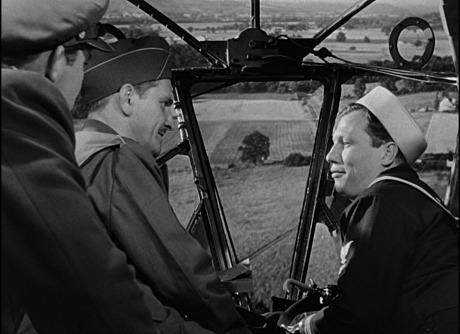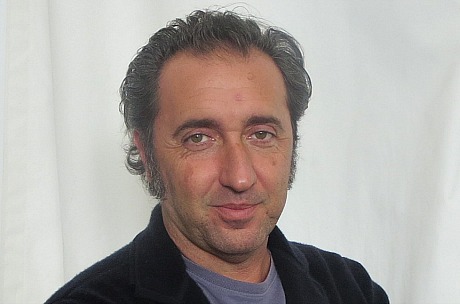The first significant media screening of Peter Berg‘s Lone Survivor (Universal, limited late December opening) happens this evening. All indications are that it’s another Black Hawk Down only darker — a tale of a failed Middle-Eastern military mission (i.e., 2005’s Operation Red Wing in Afghanistan) that led to a lot of American soldiers getting wasted. The highlight, I’m told, is a long unbroken battle sequence that lasts a good 30 or 40 minutes. (I’ll time it this evening.) I respected Black Hawk Down, but I’m a tiny bit suspicious of U.S. war films that focus on brotherly camaraderie and ignore the bigger questions. The Afghanistan War (which we’re finally extricating ourselves from) was pure quicksand from the get-go. U.S. forces could never hope to defeat the Taliban or reduce them to some level of insignificance because sooner or later all foreign invaders are out-lasted and eventually defeated by the natives. It’s brave and noble to protect and fight for your buddies, but it’s a sad thing to die for a no-win objective.
Day: October 30, 2013
Coveted Atmosphere
In the view of Nick “Action Man” Clement, Anton Corbijn‘s The American, Sam Peckinpah’s Bring Me the Head of Alfredo Garcia and David Fincher‘s Se7en are spiritual brethren of Ridley Scott‘s The Counselor.
“Much like in The American, Scott and screenwriter Cormac McCarthy smartly subvert the audiences’ preconceived genre expectations: the chase has to be here, it needs to end there, this character needs to be killed by that character, etc. And as in Peckinpah’s down and dirty Garcia, the narrative in The Counselor comes to a rational (however disturbing and bleak) conclusion that has to be considered as ‘audience-unfriendly’ or ‘morally reprehensible.’ [But] it’s not the job of cinema or of filmmakers to only tell stories about the morally just and dignified.
Gregg Toland’s Ghost Is Pissed Off
I’m not saying that DVD Beaver‘s Gary W. Tooze has never criticized a Bluray in one of his reviews, but I can’t remember the last time this happened. The man loves to cheer and show affection whenever possible (especially if a Bluray image is covered in digital mosquitos). So it’s significant that Tooze has actually complained about the cropping on Warner Home Video’s The Best Years Of Our Lives Bluray. Tooze provides screen captures that show a modest but significant portion of the right-side area having been sliced off, and asks “why?” Tooze’s screen captures are generally reliable so I see no need to doubt his evidence. The trimmed section appeared on earlier DVD versions; it makes no sense to me that WHV technicans would decide to do this. (Tooze says the slicing is evident only “through the beginning.”) WHV’s Ned Price has been snippy ever since last spring’s Shane brouhaha but maybe the good-natured George Feltenstein can answer this. What’s the rationale for cleavering Gregg Toland‘s framings during the early portions of this 1946 classic?

Frame capture from 2000 MGM Home Video DVD — notice the breathing room on Harold Russell’s mid-back area on the right side.

Same scene on Warner Home Video’s new Bluray — Russell’s back has been sliced off. At the same time there’s more to see of Dana Andrew’s cap on the left side. Why crop the image at all? Why not show a generous portion of Andrews’ cap as well as Russell’s lower back area?
Decadent Roman Splendor Guy
Late this morning I drove up to the Chateau Marmont for a brief chat with acclaimed Italian director Paolo Sorrentino about his latest film, The Great Beauty (La Grande Bellazza), which I discussed a couple of days ago (“Beauty in A Shoebox“). Pretty much everyone has called it a modern day, Berlusconi-era version of Federico Fellini‘s La Dolce Vita, but I barely went there. I just don’t have the nerve to ask obvious questions. (Sorrentino says virtually everyone has brought this up.) I mostly asked about Beauty‘s dazzling visual style, which is composed in a luscious old-school fashion. Sorrentino shot Beauty on film, but acknowledges this won’t happen again. Like his pallies the Coen brothers, who have also admitted they’ve thrown in the celluloid towel, Sorrentino is resigned to shooting his next film digitally. He has no clue what that next film might be about, although he says he intends to keep his partnership going with Toni Servillo, the star of Beauty as well as Sorrentino’s Il Divo (’09).

The Great Beauty director Pasolo Sorrentino at L.A.’s Chateau Marmont — Wednesday, 10.30, 11:25 am.
Nosferatu and Me
Last night I popped in the Kino Bluray of F.W. Murnau‘s Nosferatu (1922), which I’ve been absorbing by way of clips and stills since the ’70s but which I’d never watched whole. I’m glad I got it out of the way but I have to say that my respect for Nosferatu as a seminal German expressionist horror film has now been mitigated. The restoration by Luciano Berriatua presumably represents the best this 92 year-old film can look, but the best I can say about the content is that it’s a noteworthy, occasionally interesting slog.
